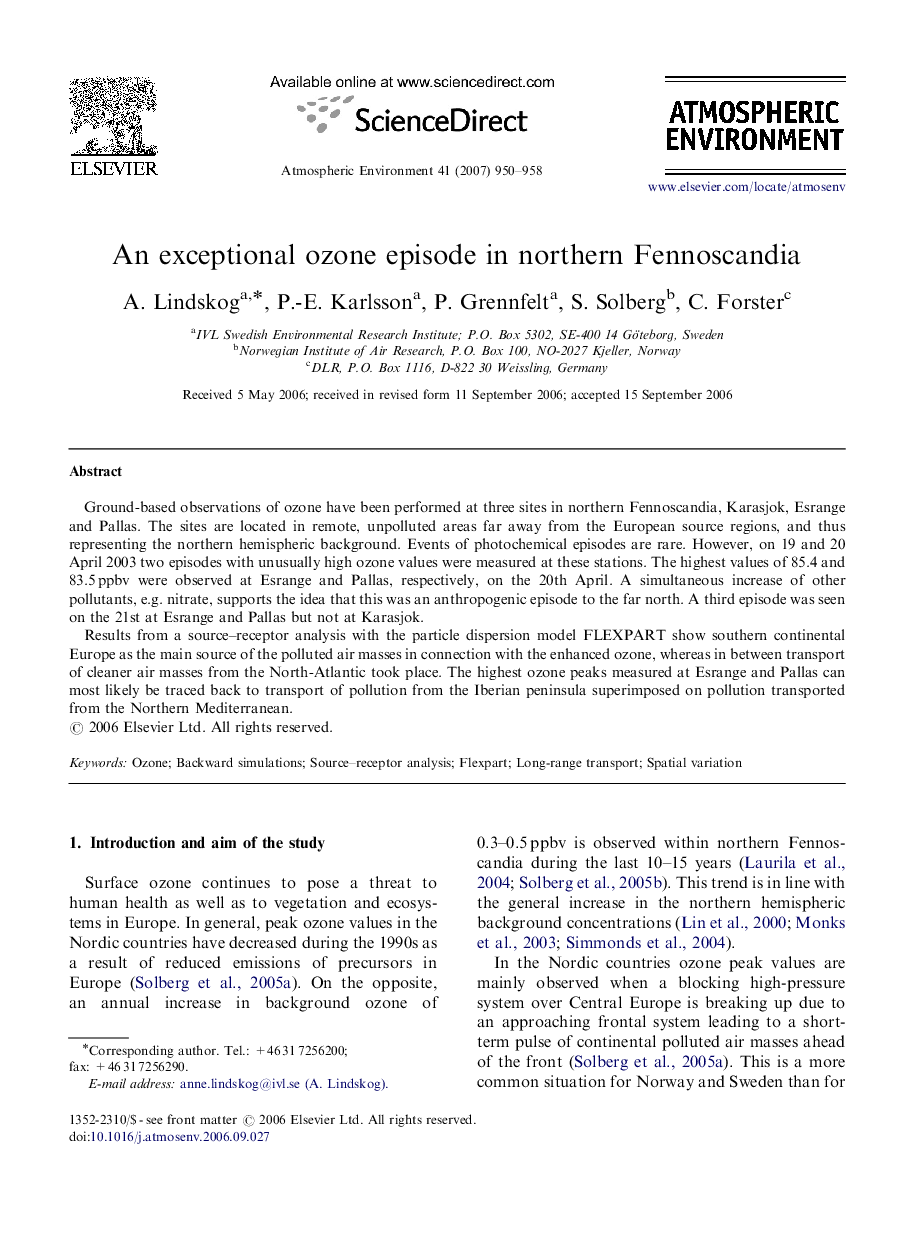| Article ID | Journal | Published Year | Pages | File Type |
|---|---|---|---|---|
| 4443071 | Atmospheric Environment | 2007 | 9 Pages |
Ground-based observations of ozone have been performed at three sites in northern Fennoscandia, Karasjok, Esrange and Pallas. The sites are located in remote, unpolluted areas far away from the European source regions, and thus representing the northern hemispheric background. Events of photochemical episodes are rare. However, on 19 and 20 April 2003 two episodes with unusually high ozone values were measured at these stations. The highest values of 85.4 and 83.5 ppbv were observed at Esrange and Pallas, respectively, on the 20th April. A simultaneous increase of other pollutants, e.g. nitrate, supports the idea that this was an anthropogenic episode to the far north. A third episode was seen on the 21st at Esrange and Pallas but not at Karasjok.Results from a source–receptor analysis with the particle dispersion model FLEXPART show southern continental Europe as the main source of the polluted air masses in connection with the enhanced ozone, whereas in between transport of cleaner air masses from the North-Atlantic took place. The highest ozone peaks measured at Esrange and Pallas can most likely be traced back to transport of pollution from the Iberian peninsula superimposed on pollution transported from the Northern Mediterranean.
